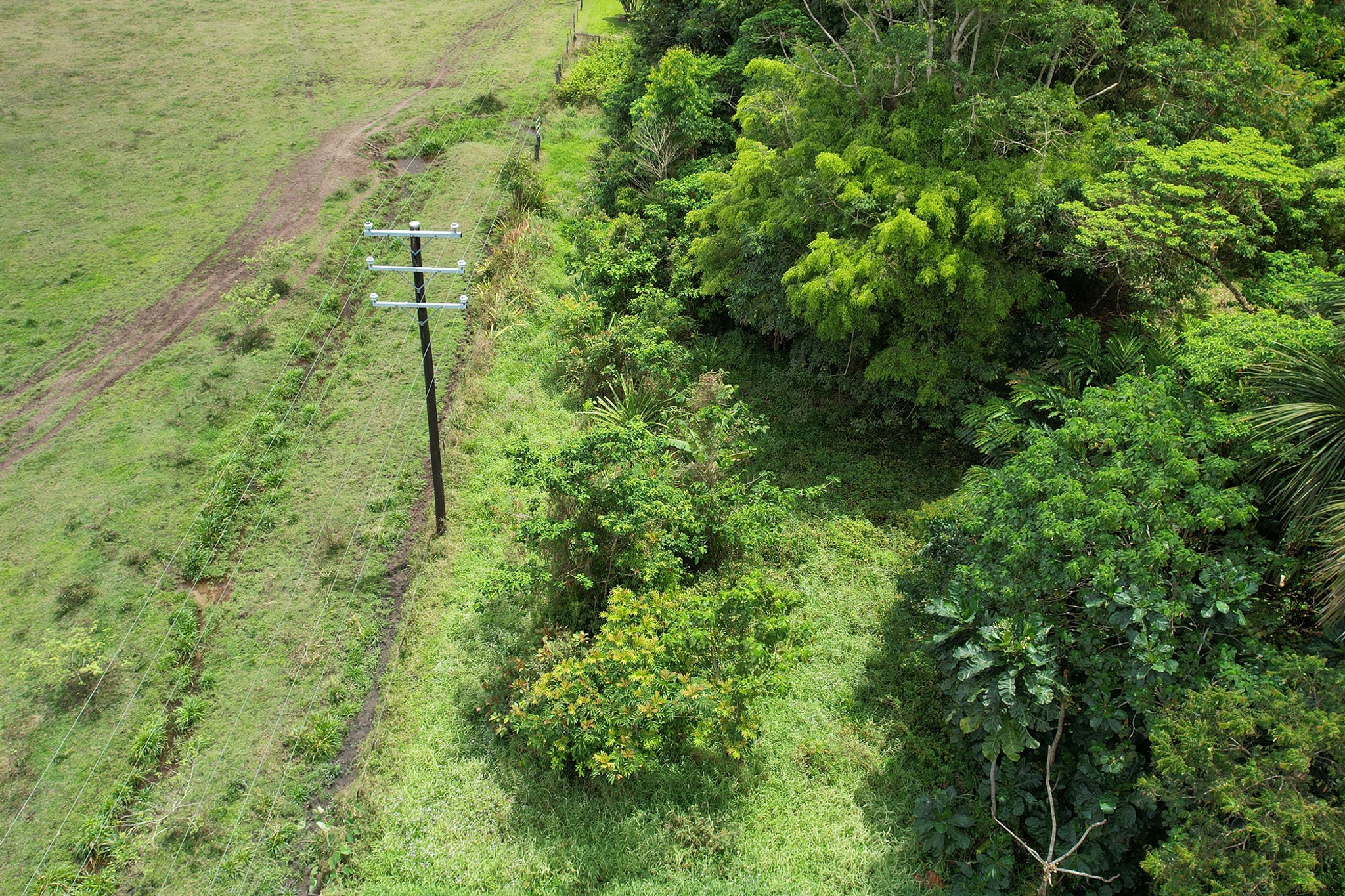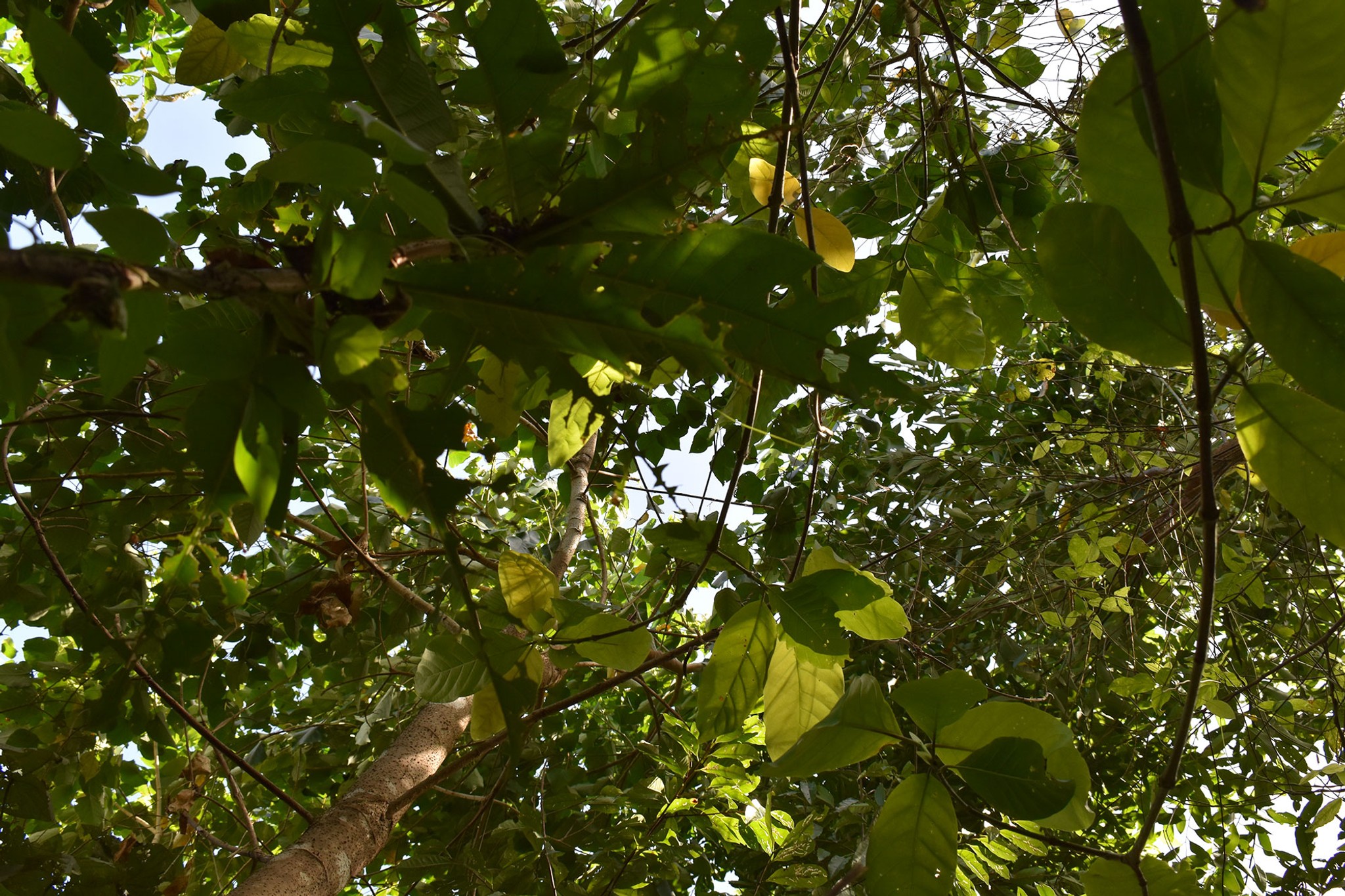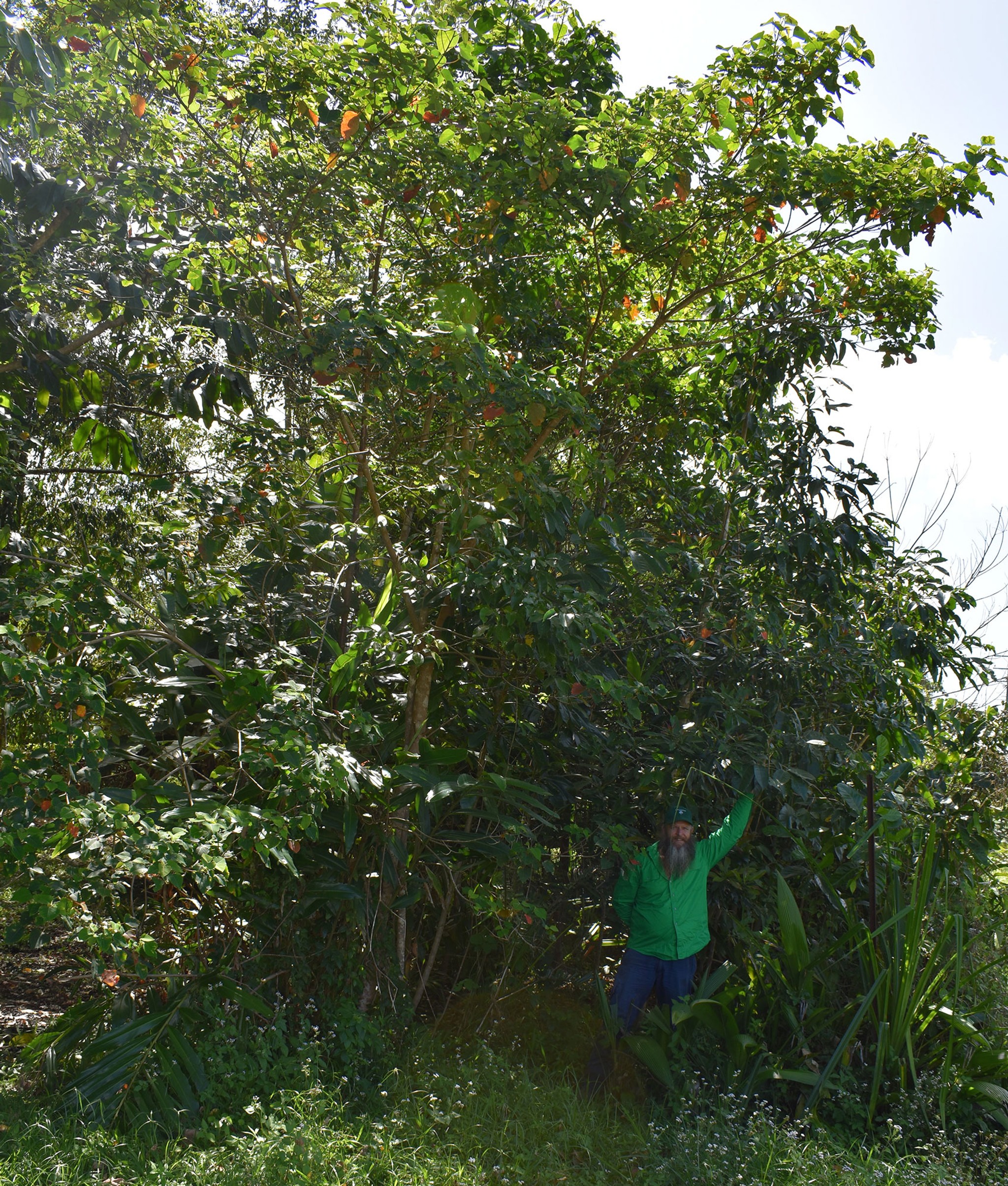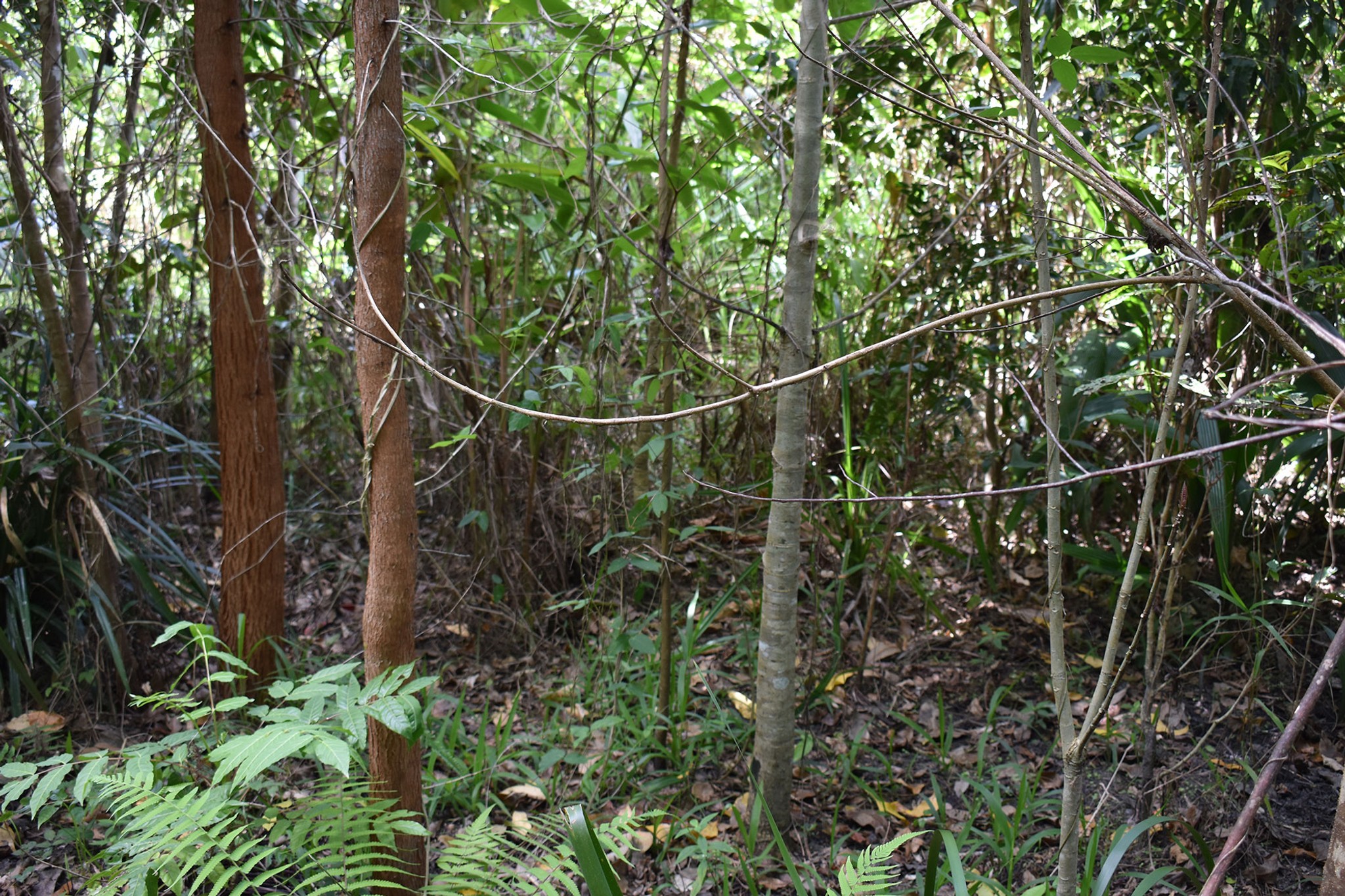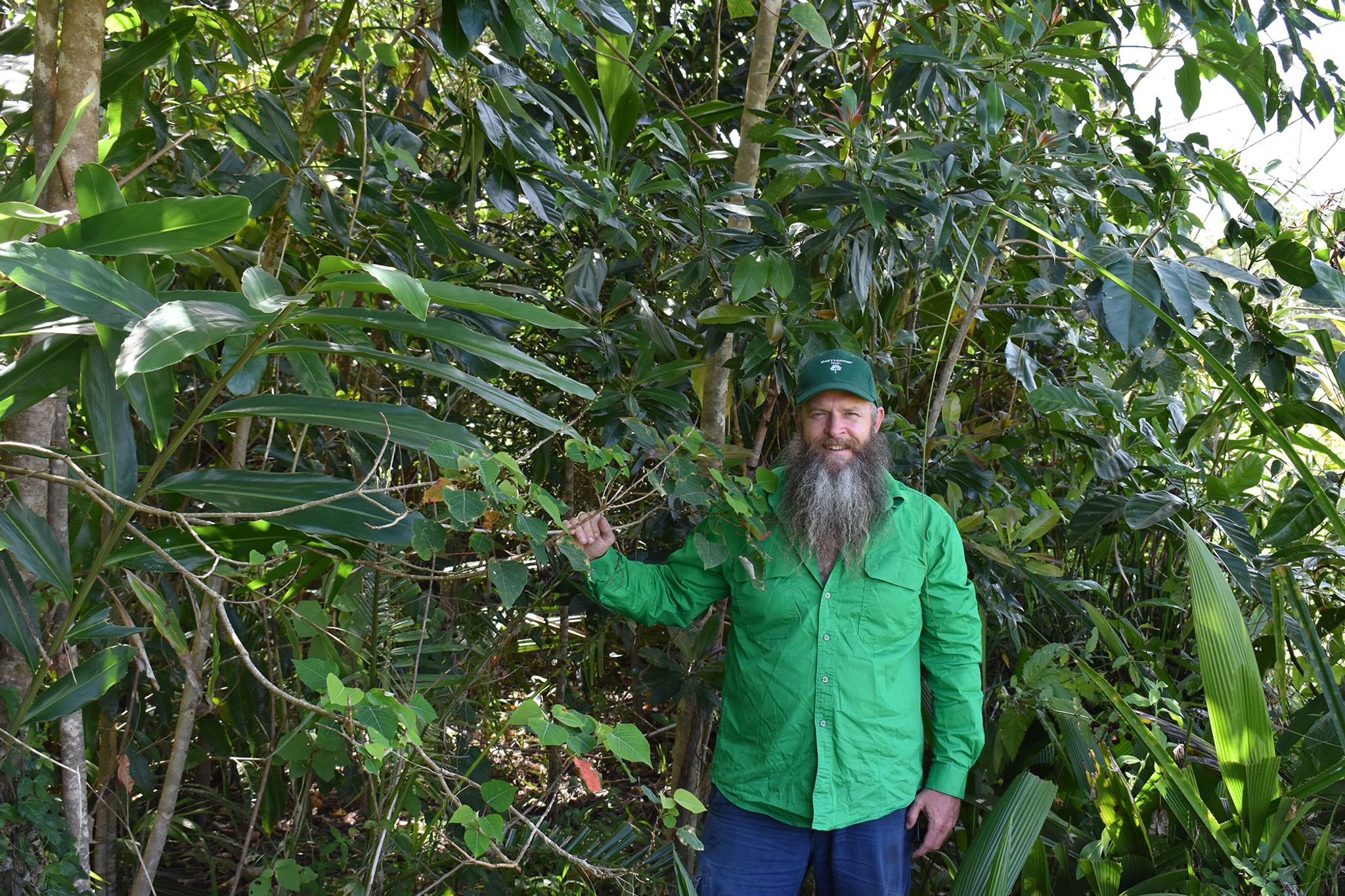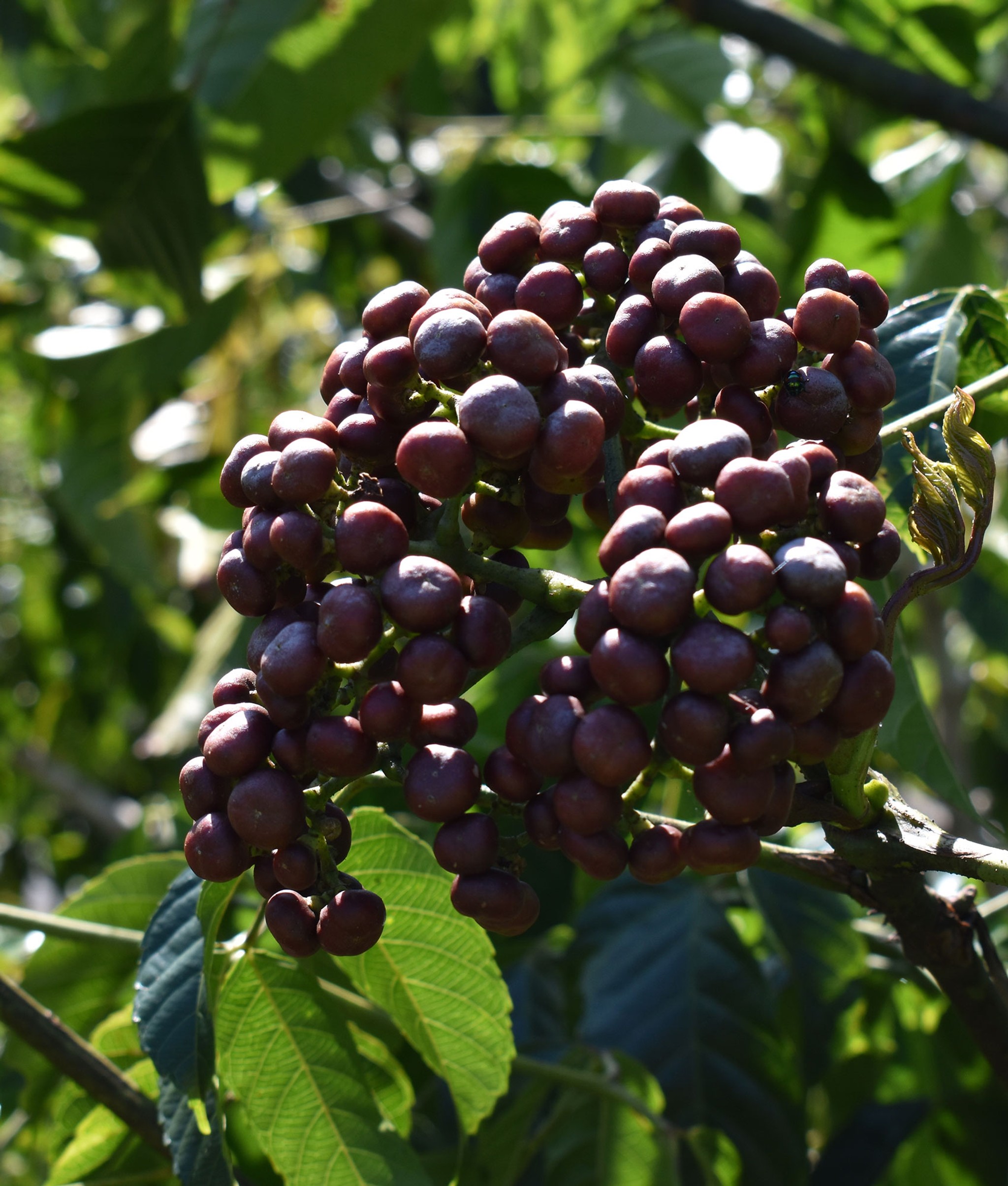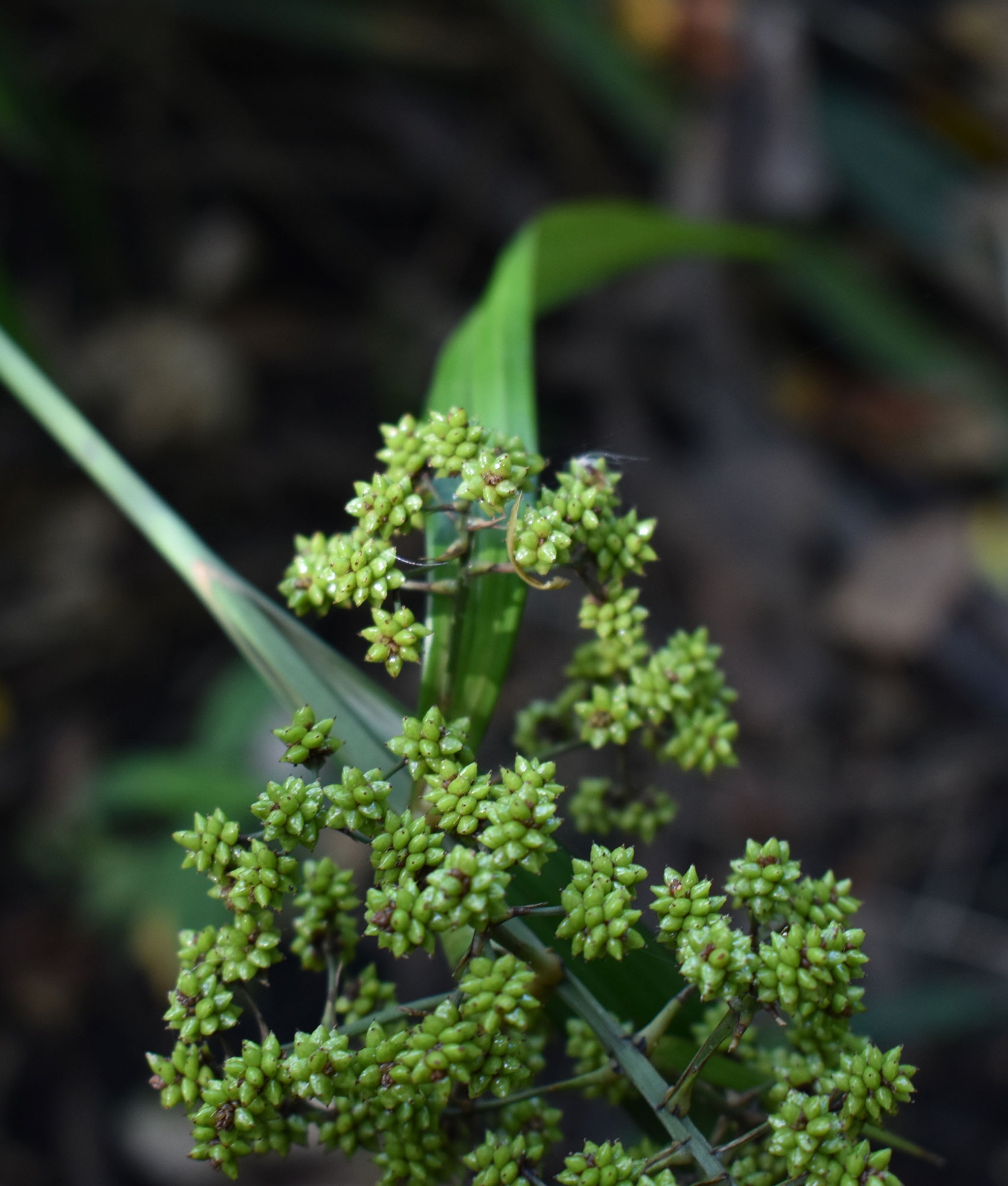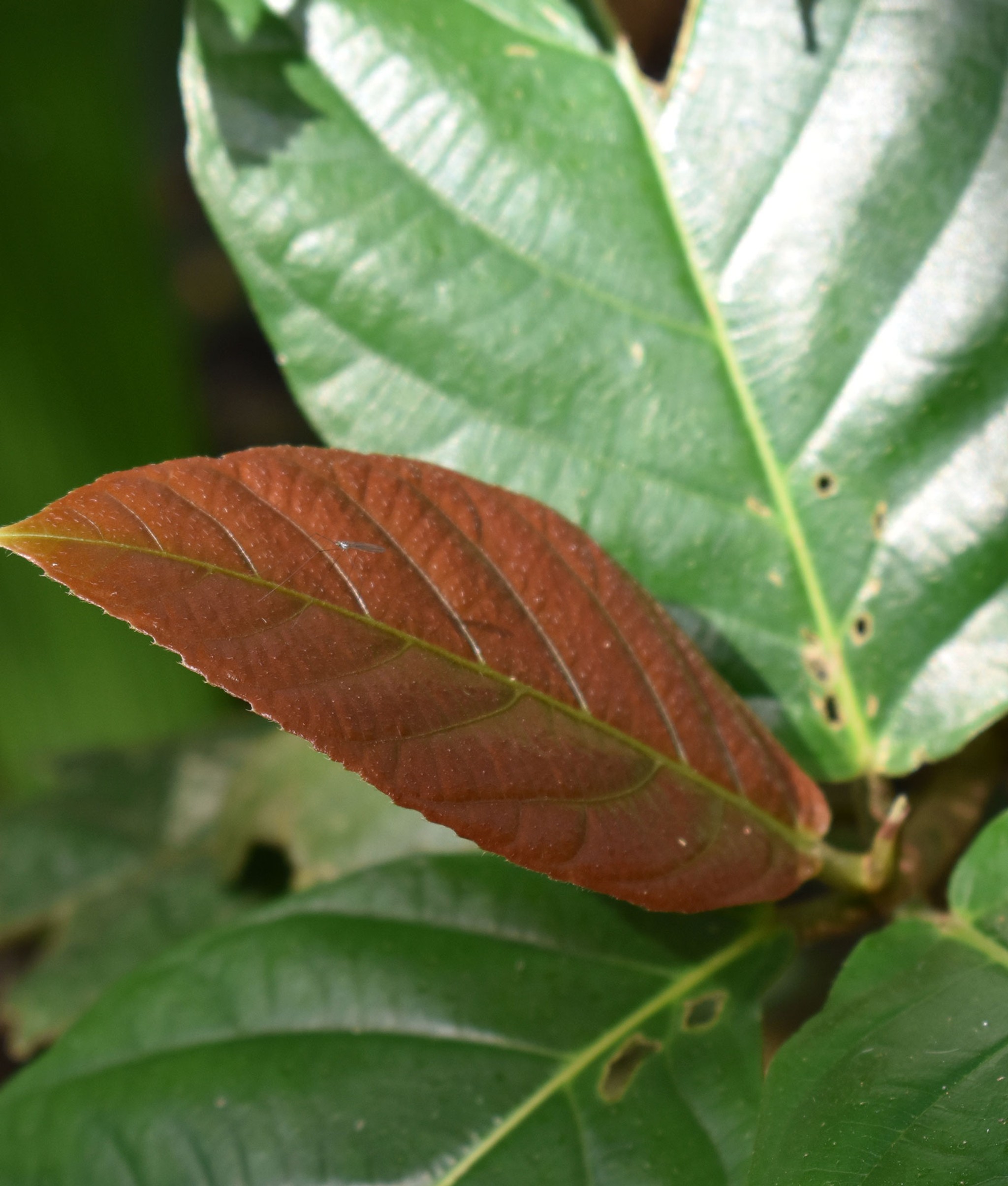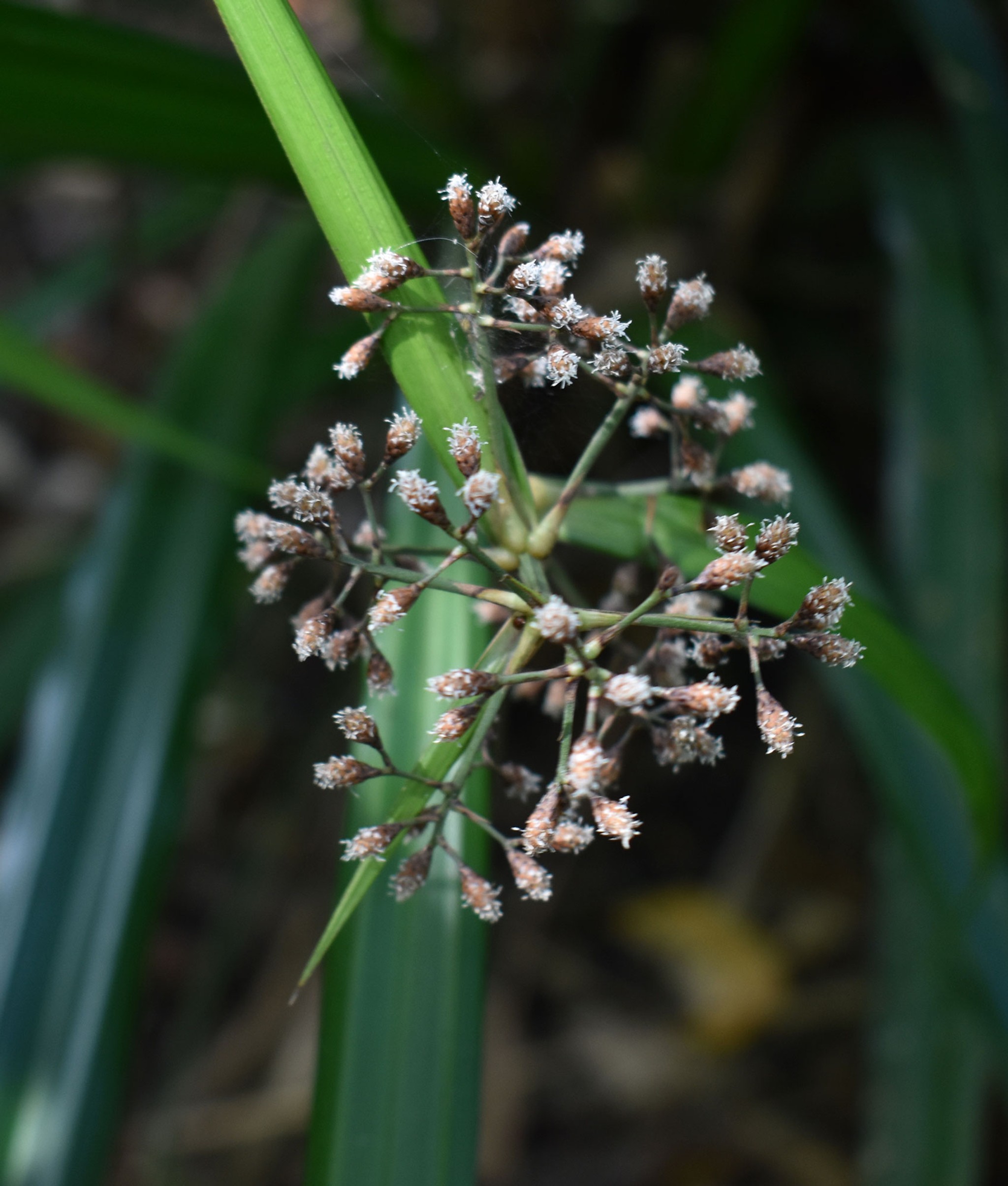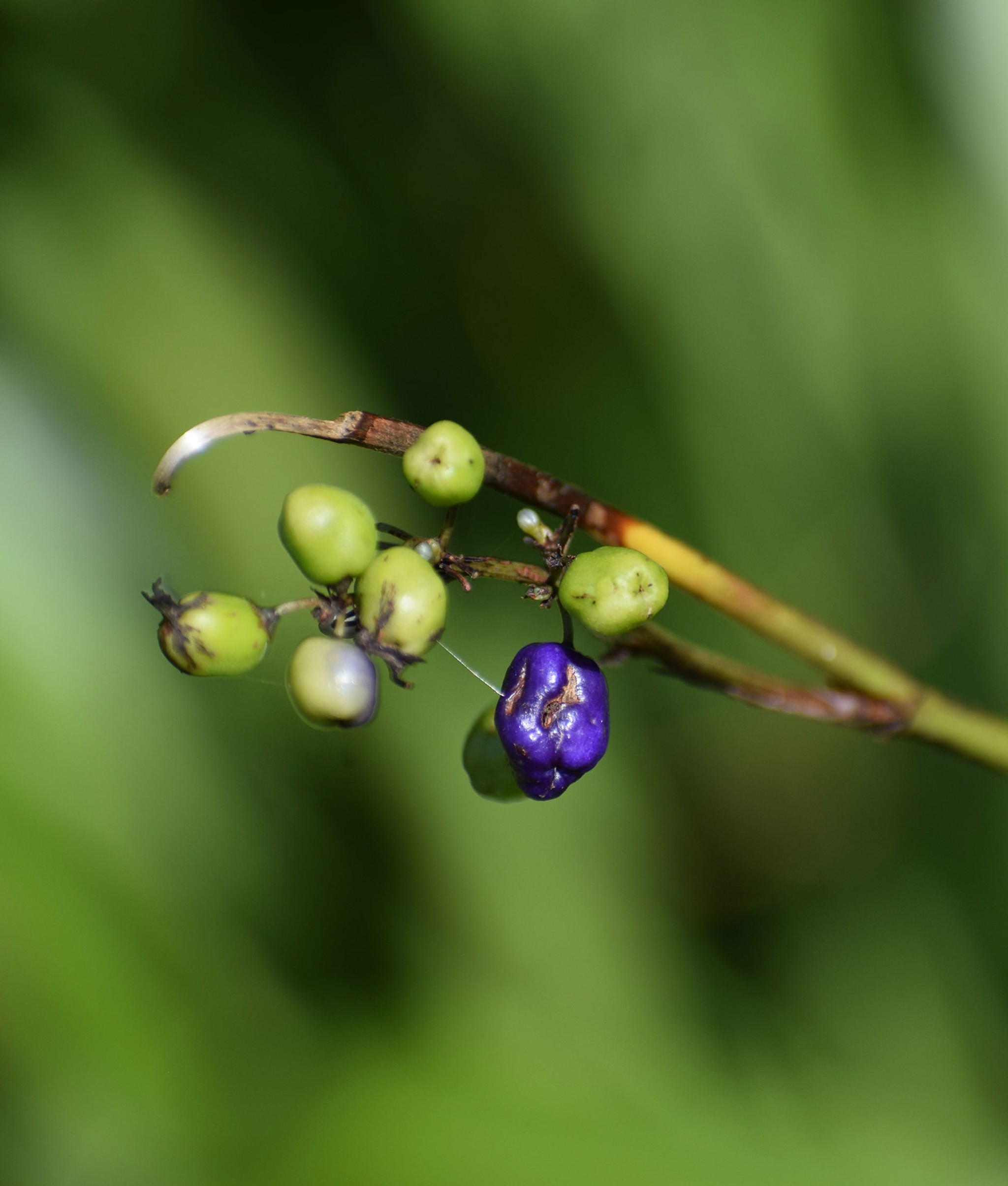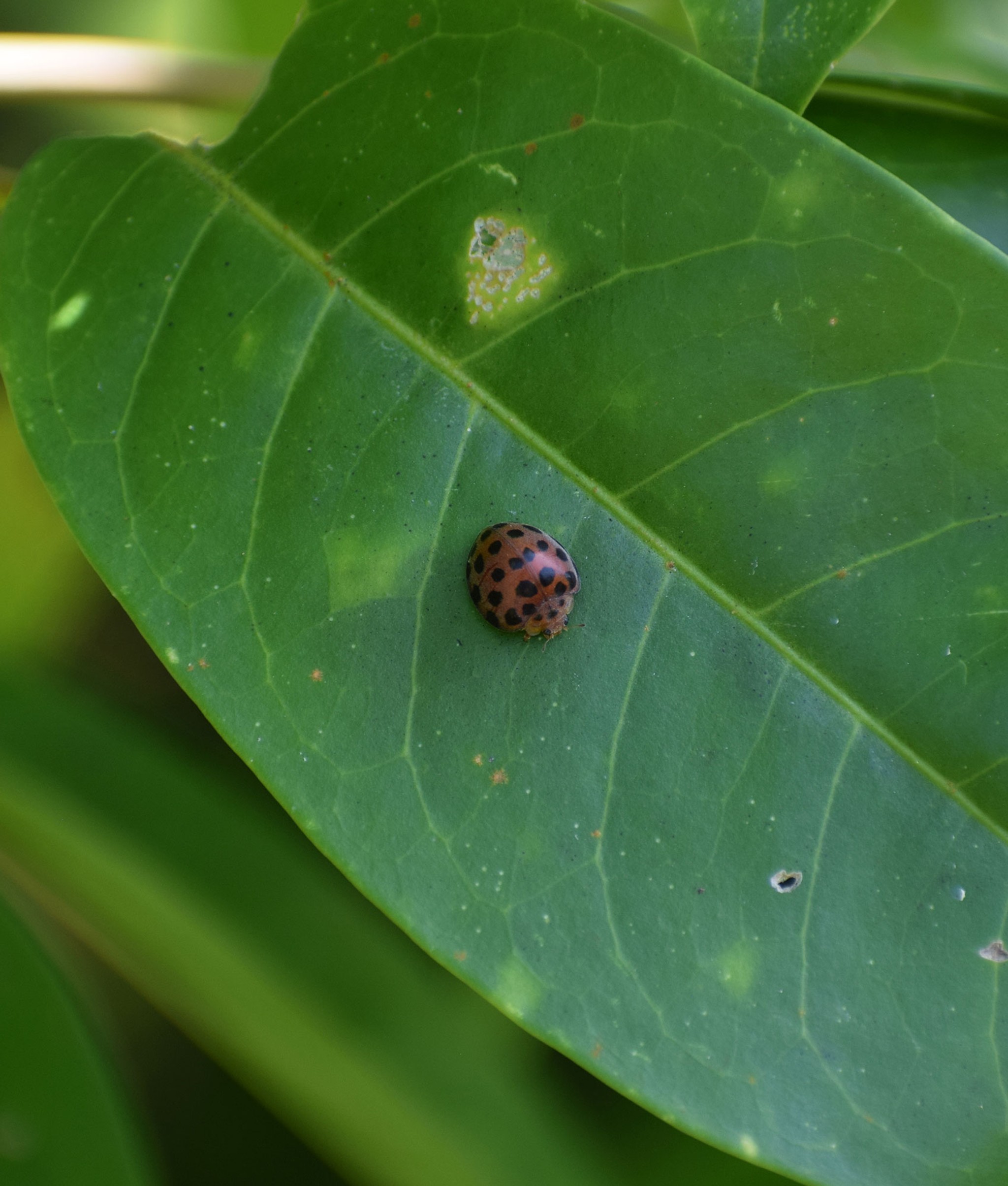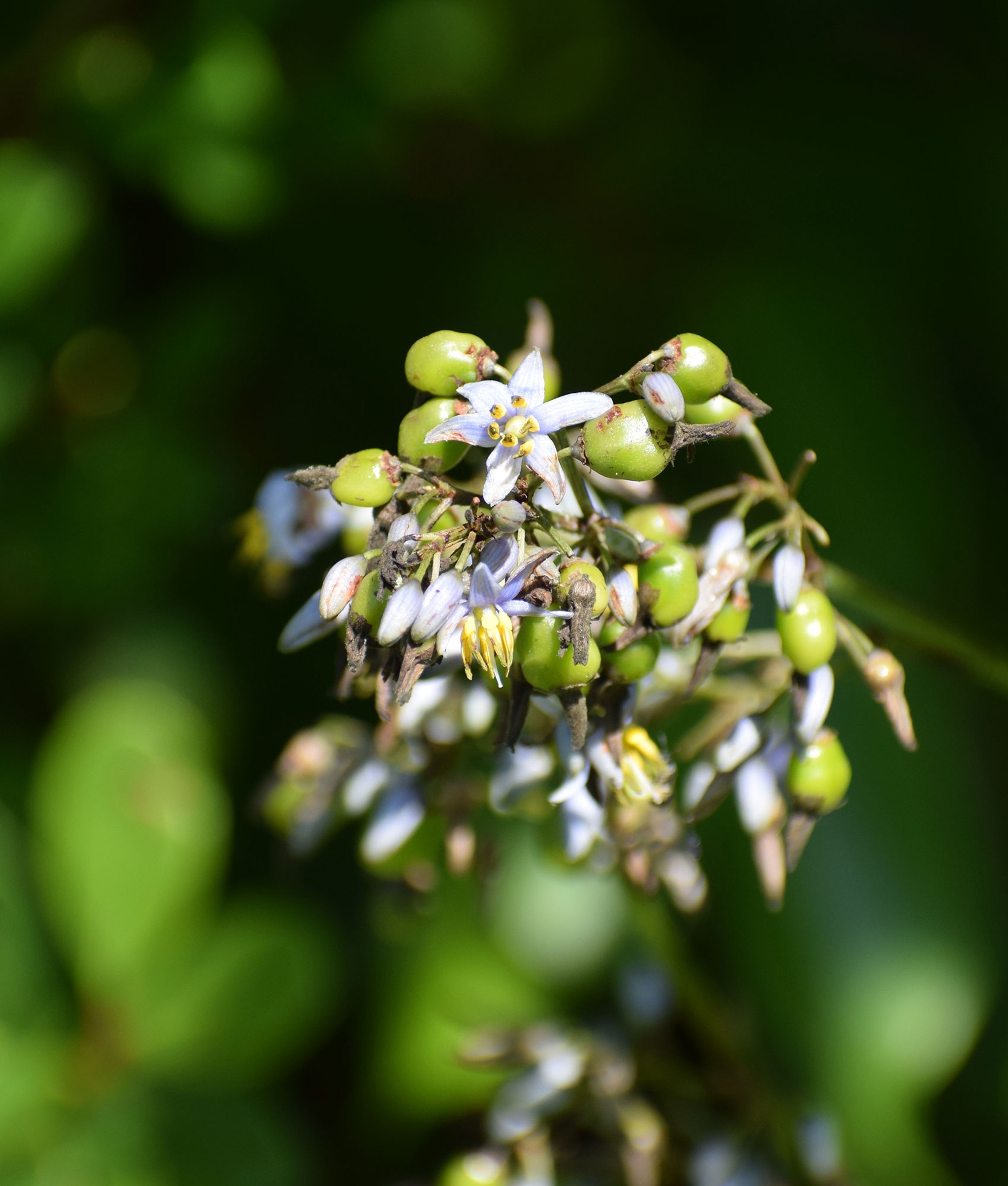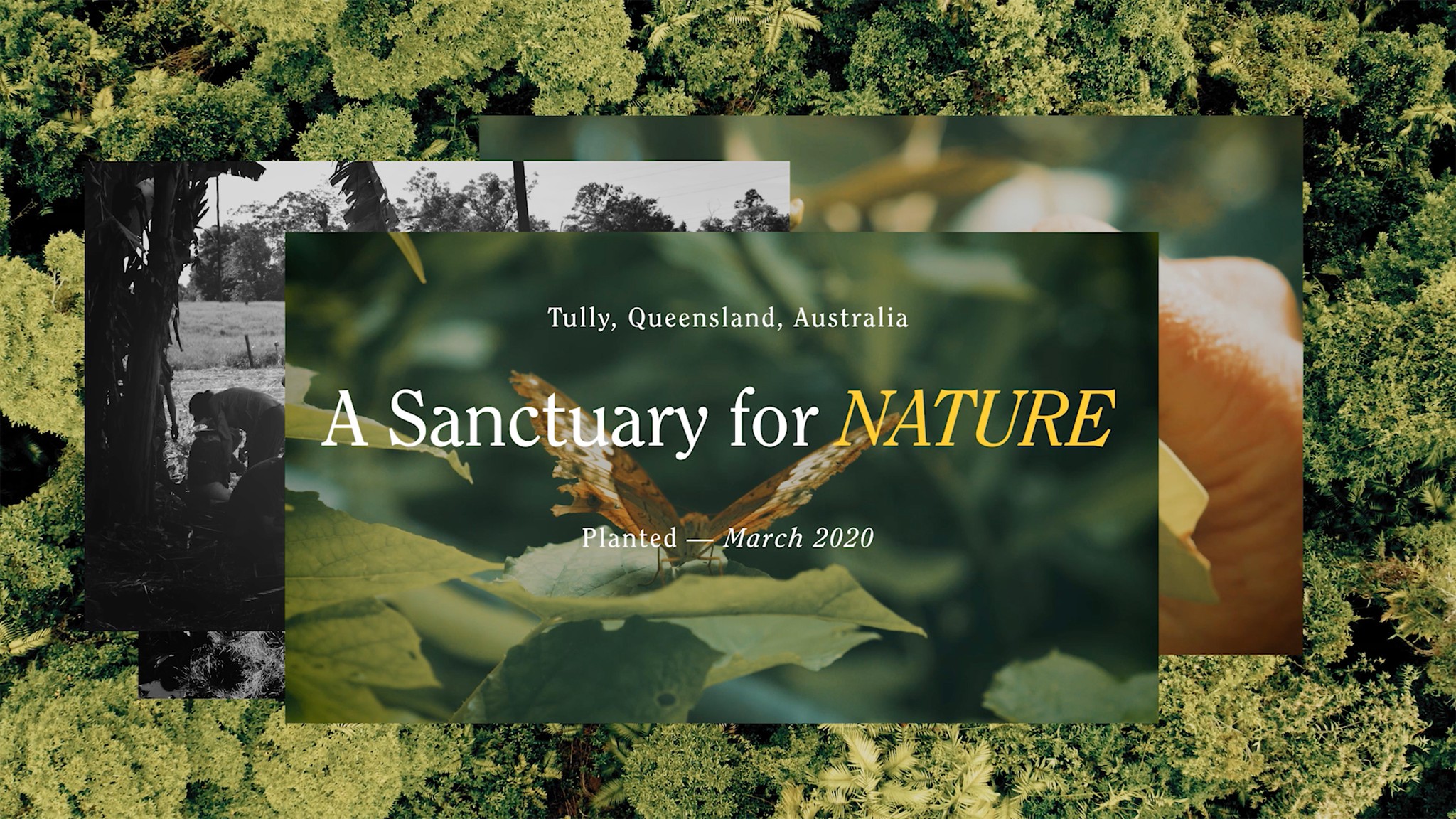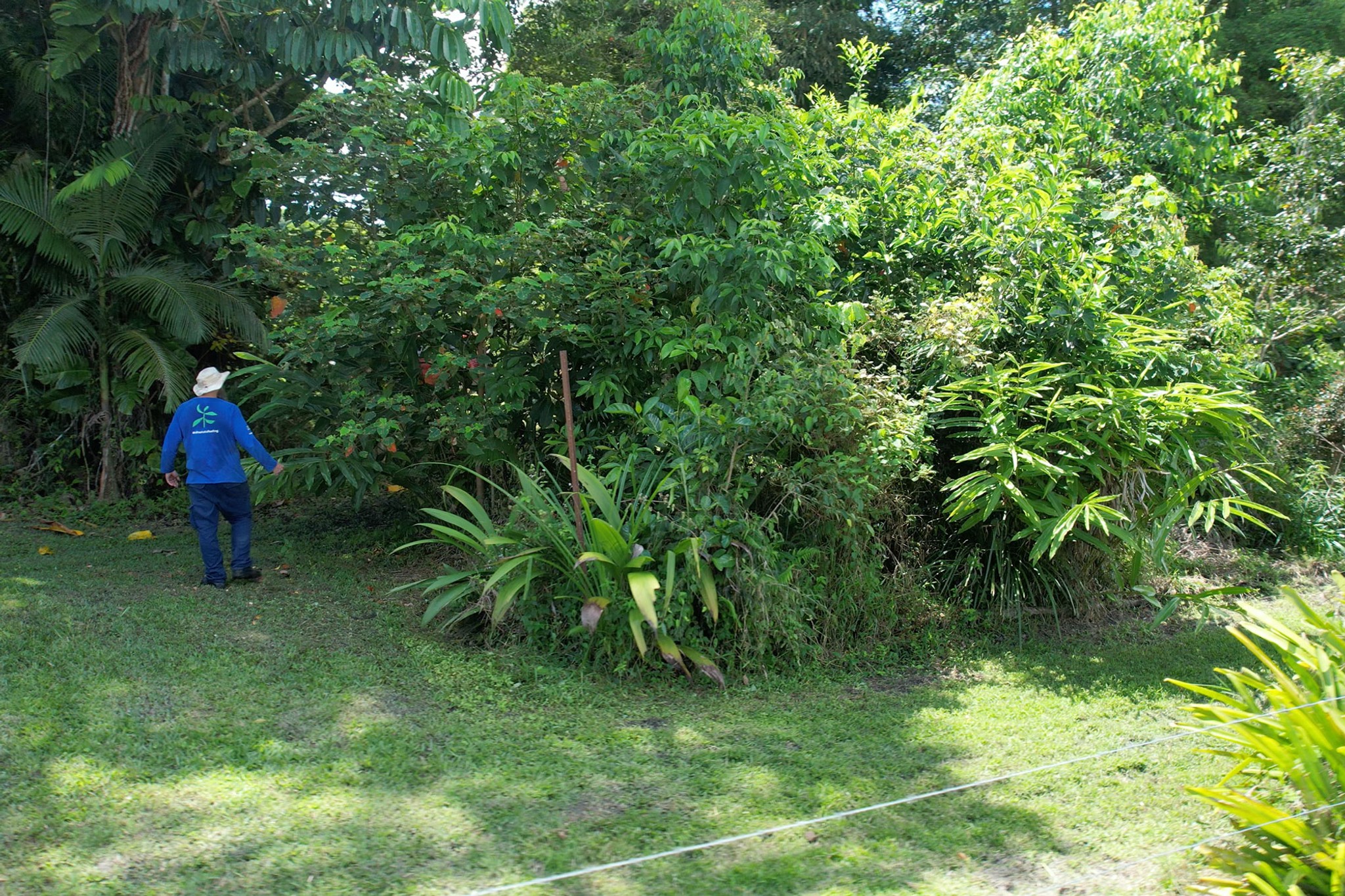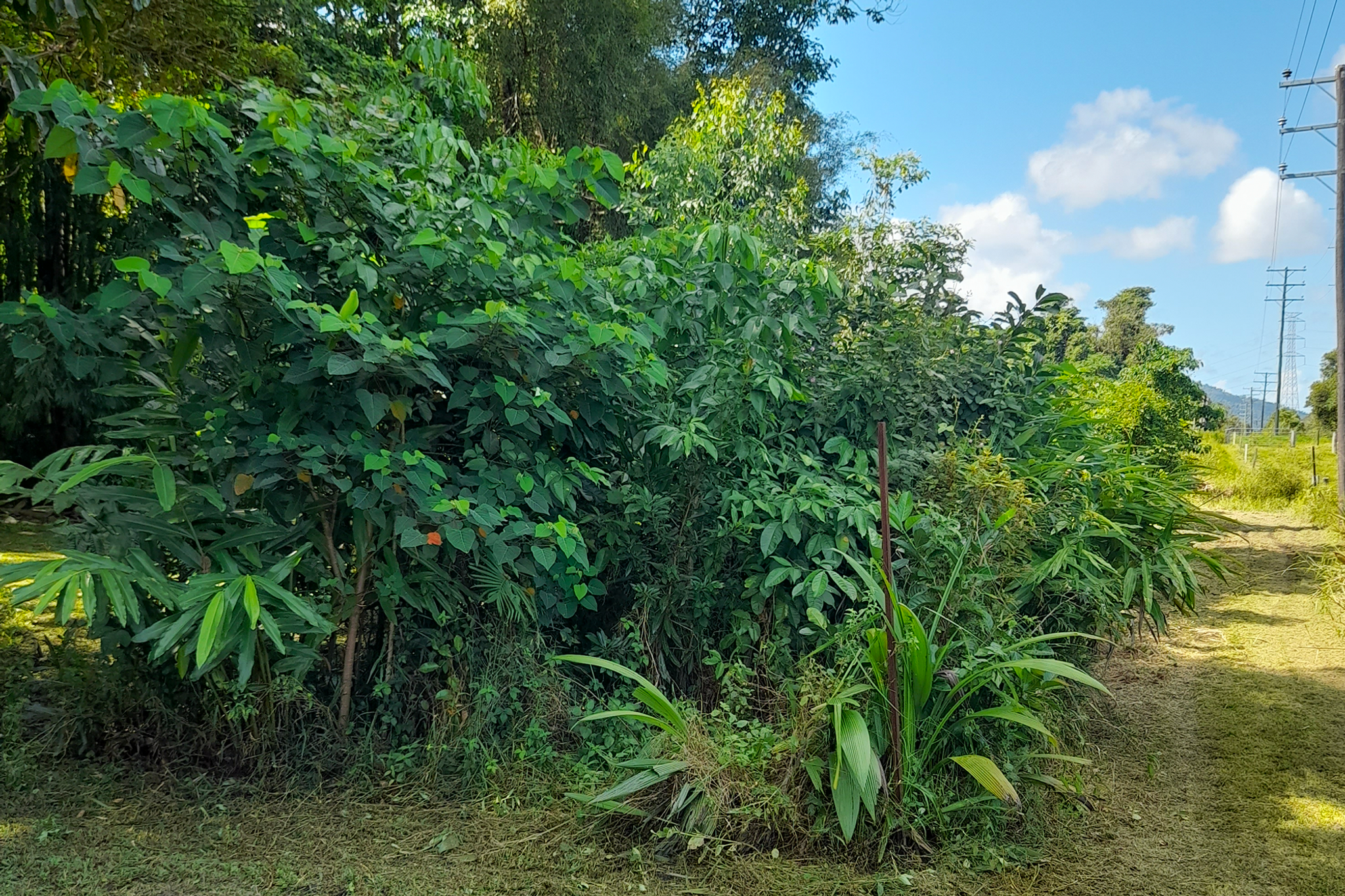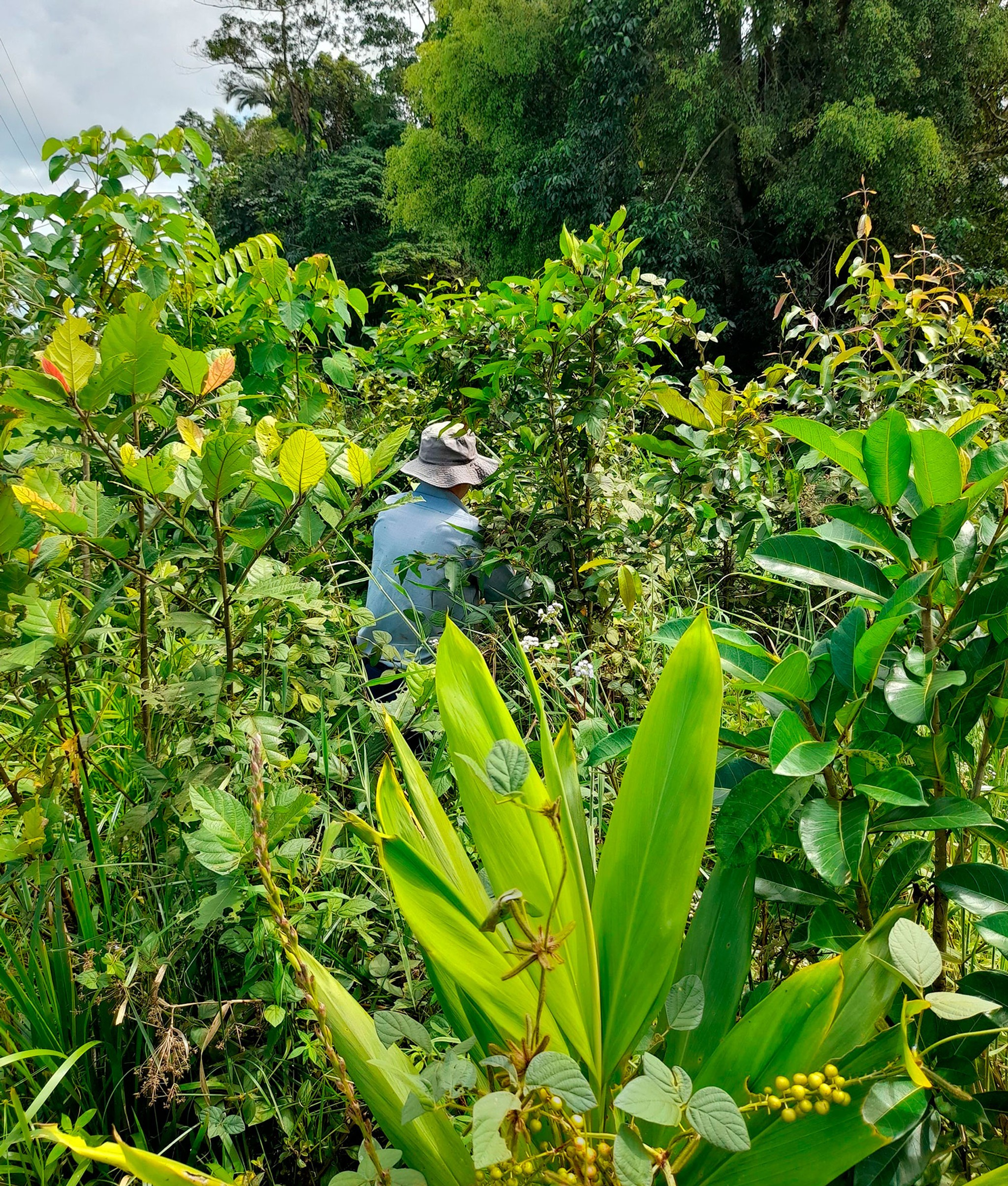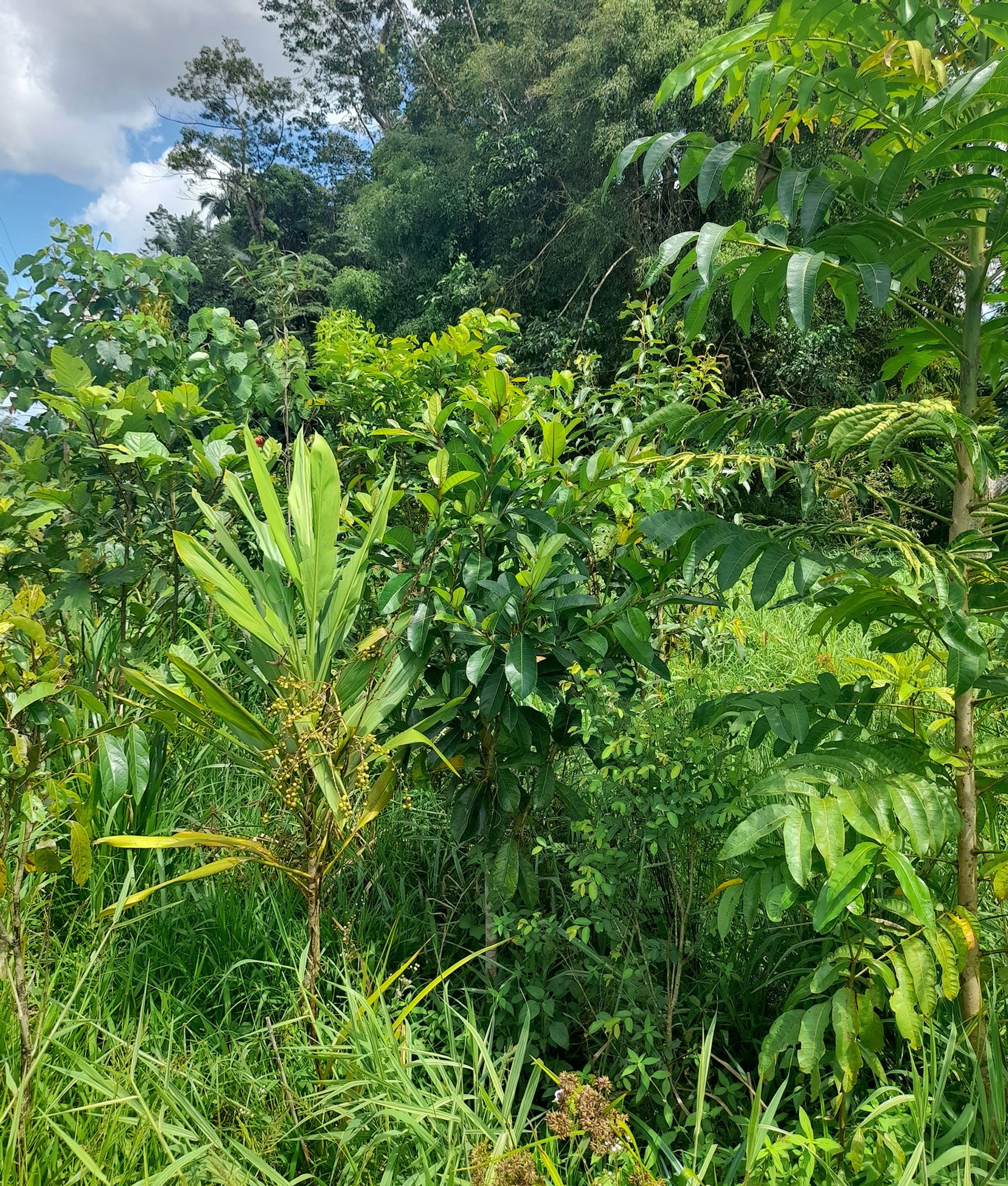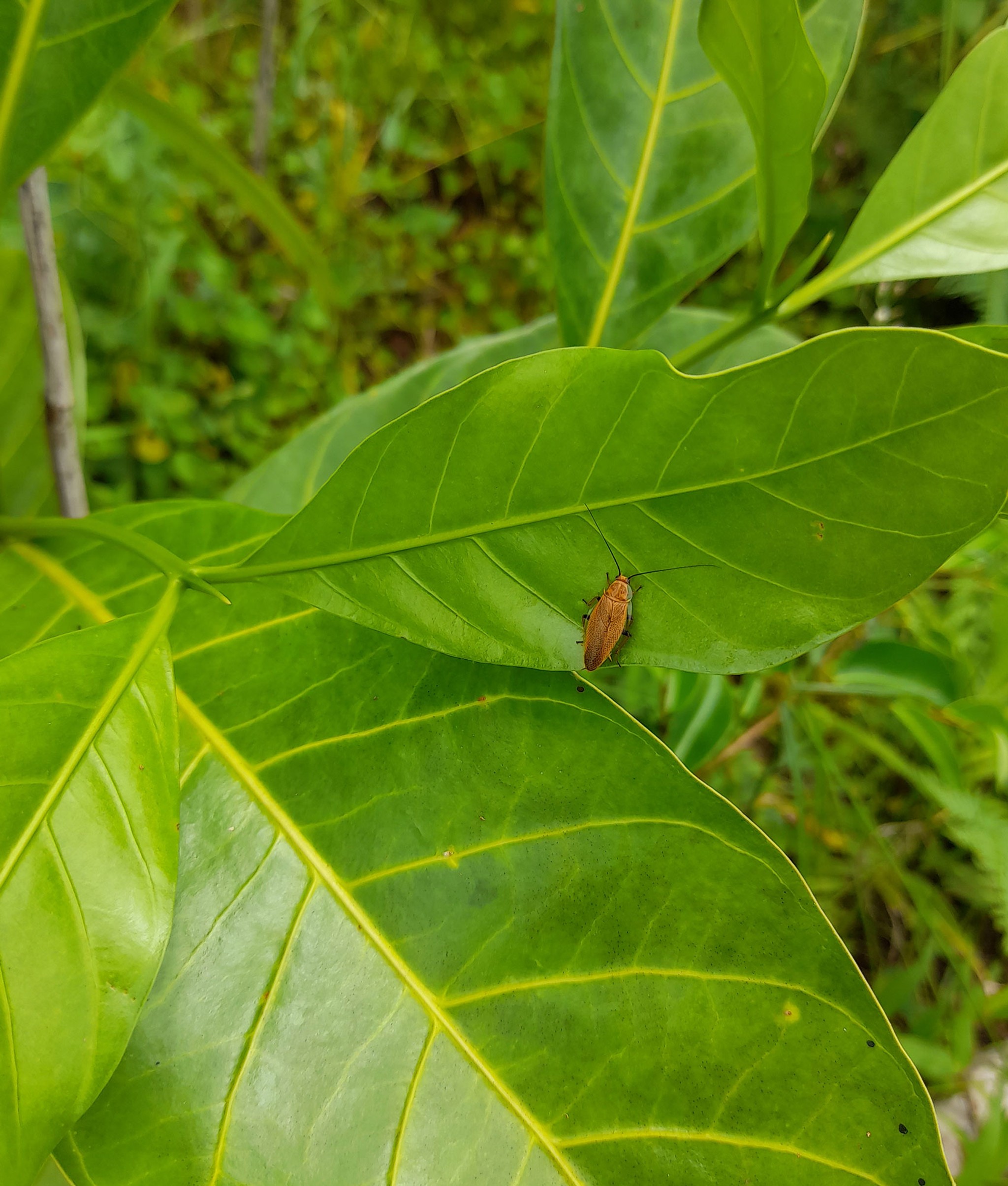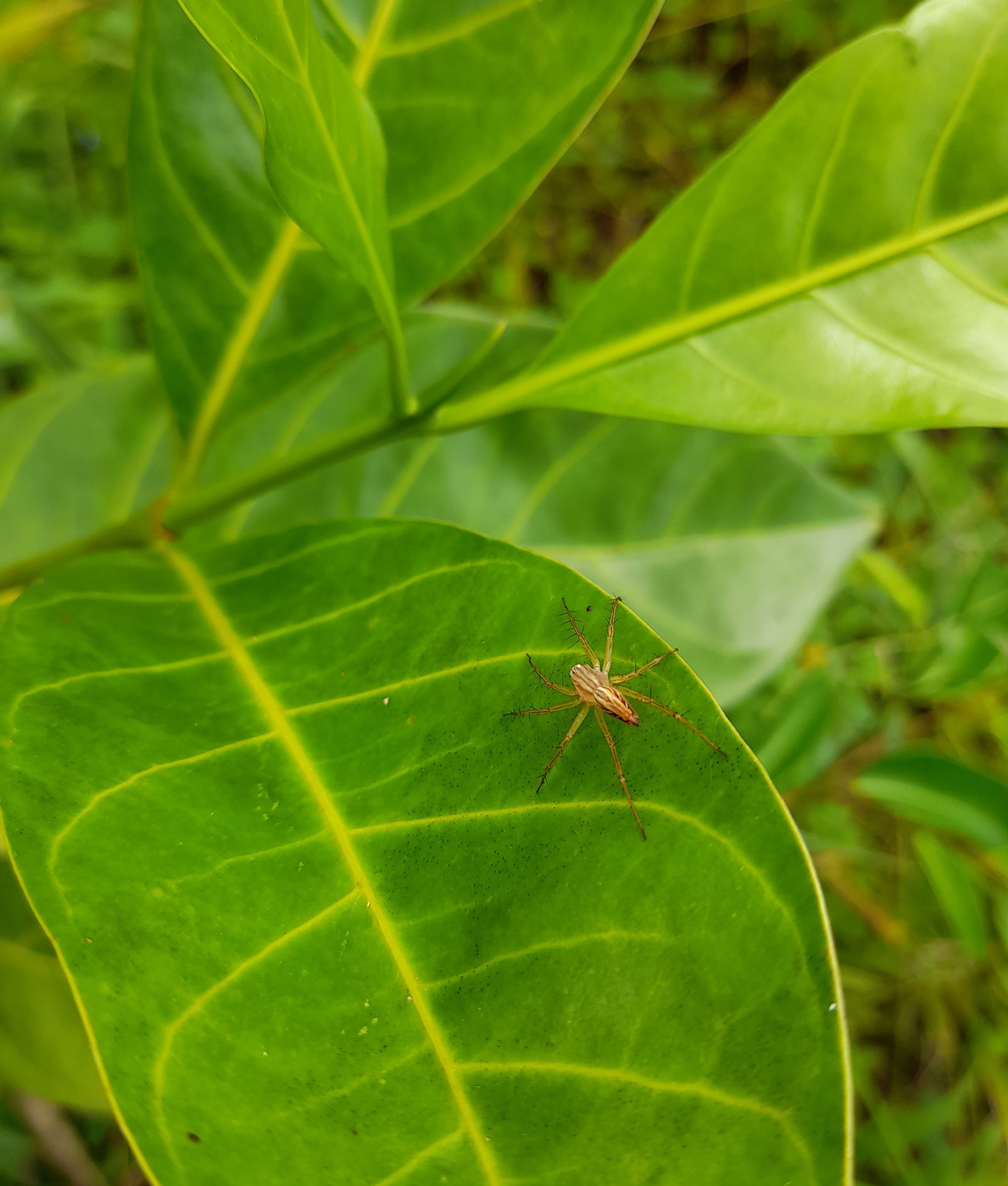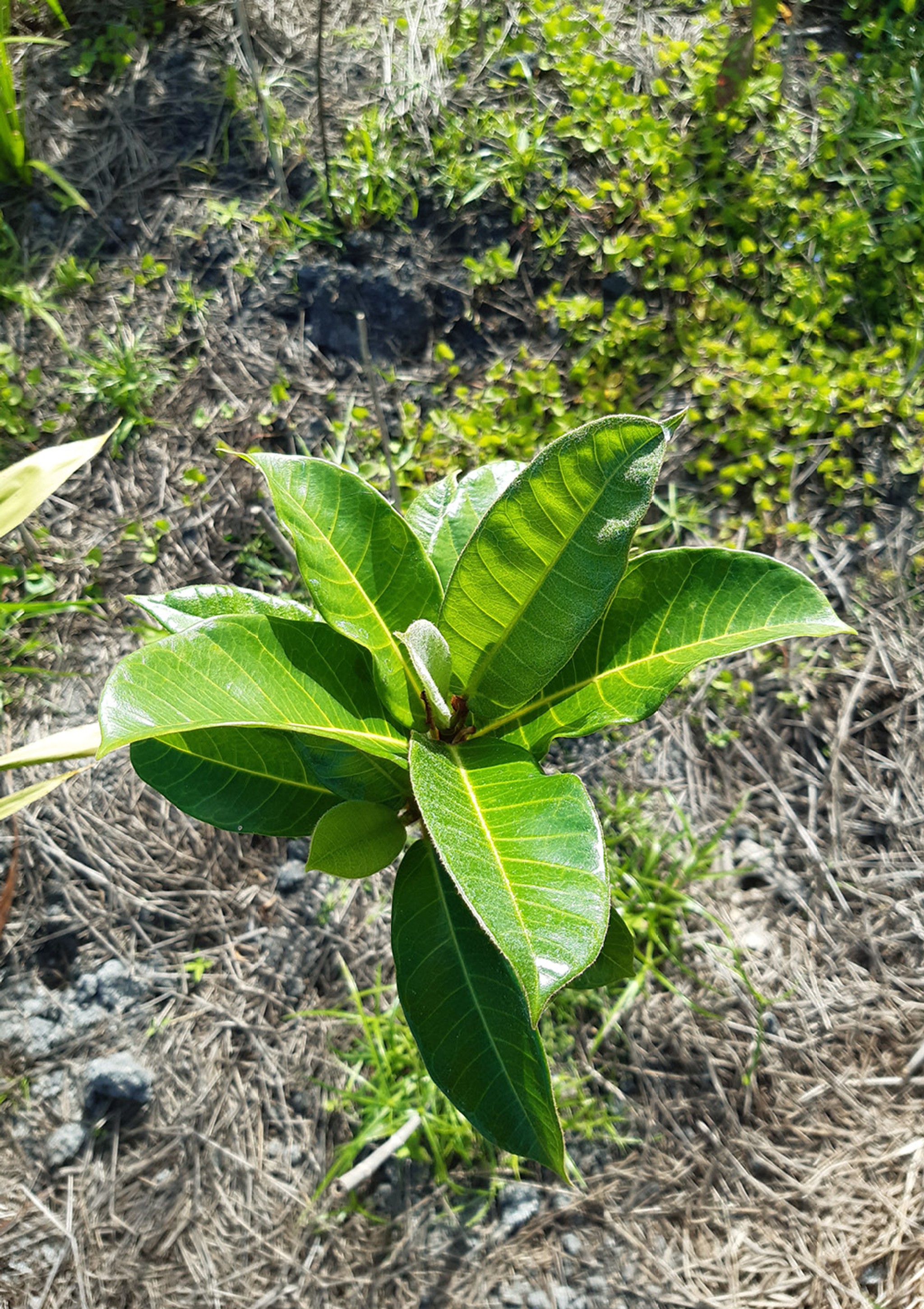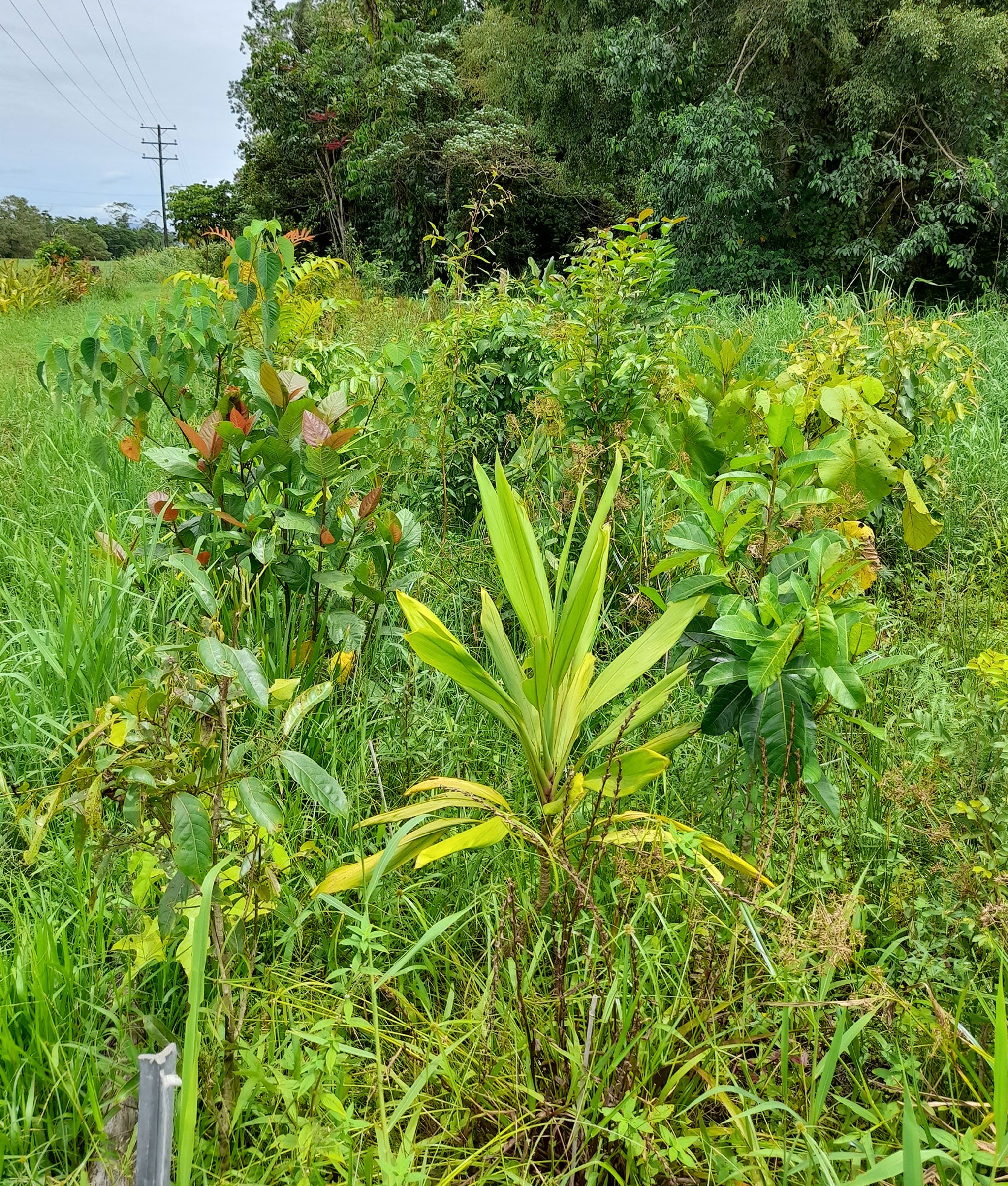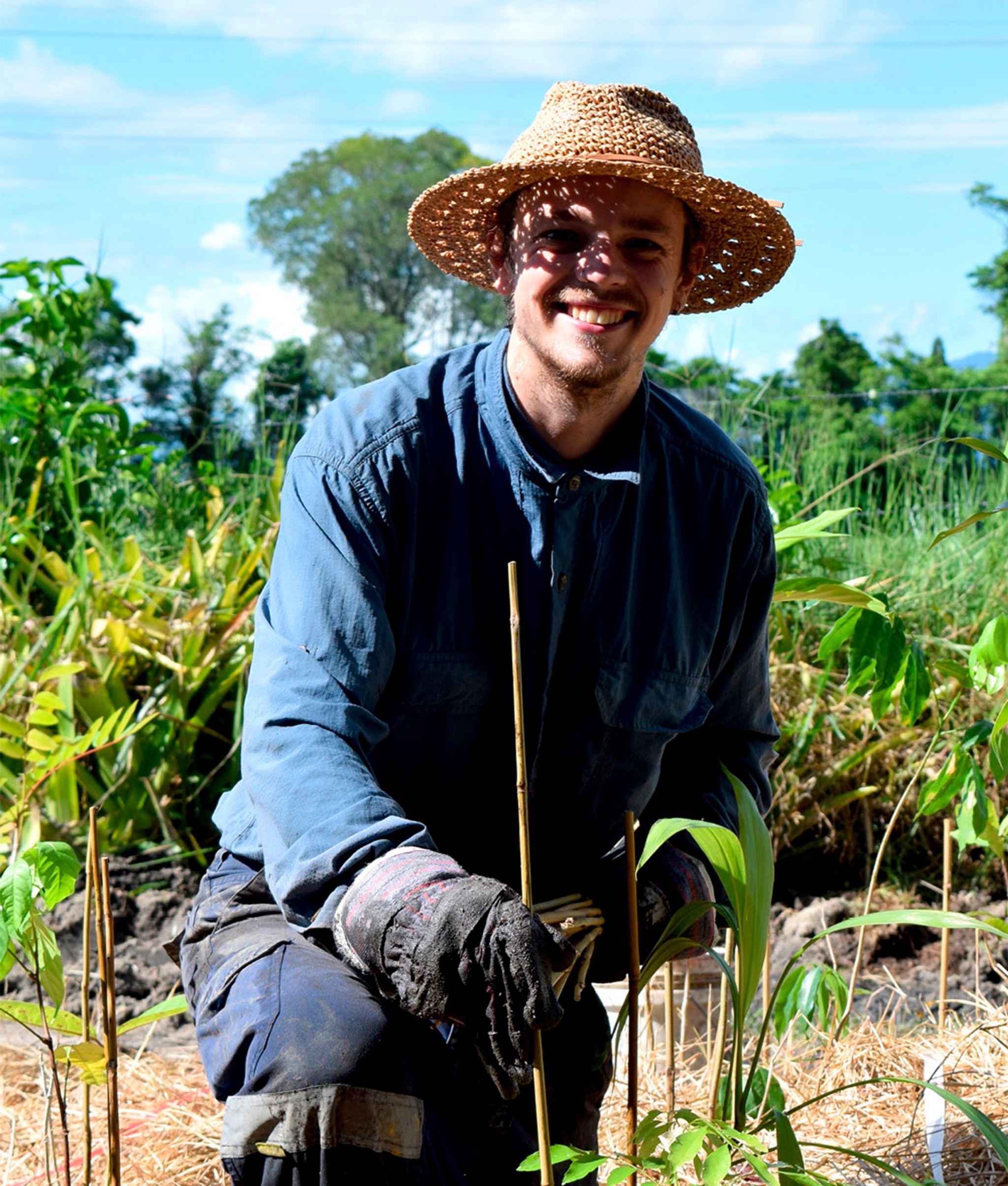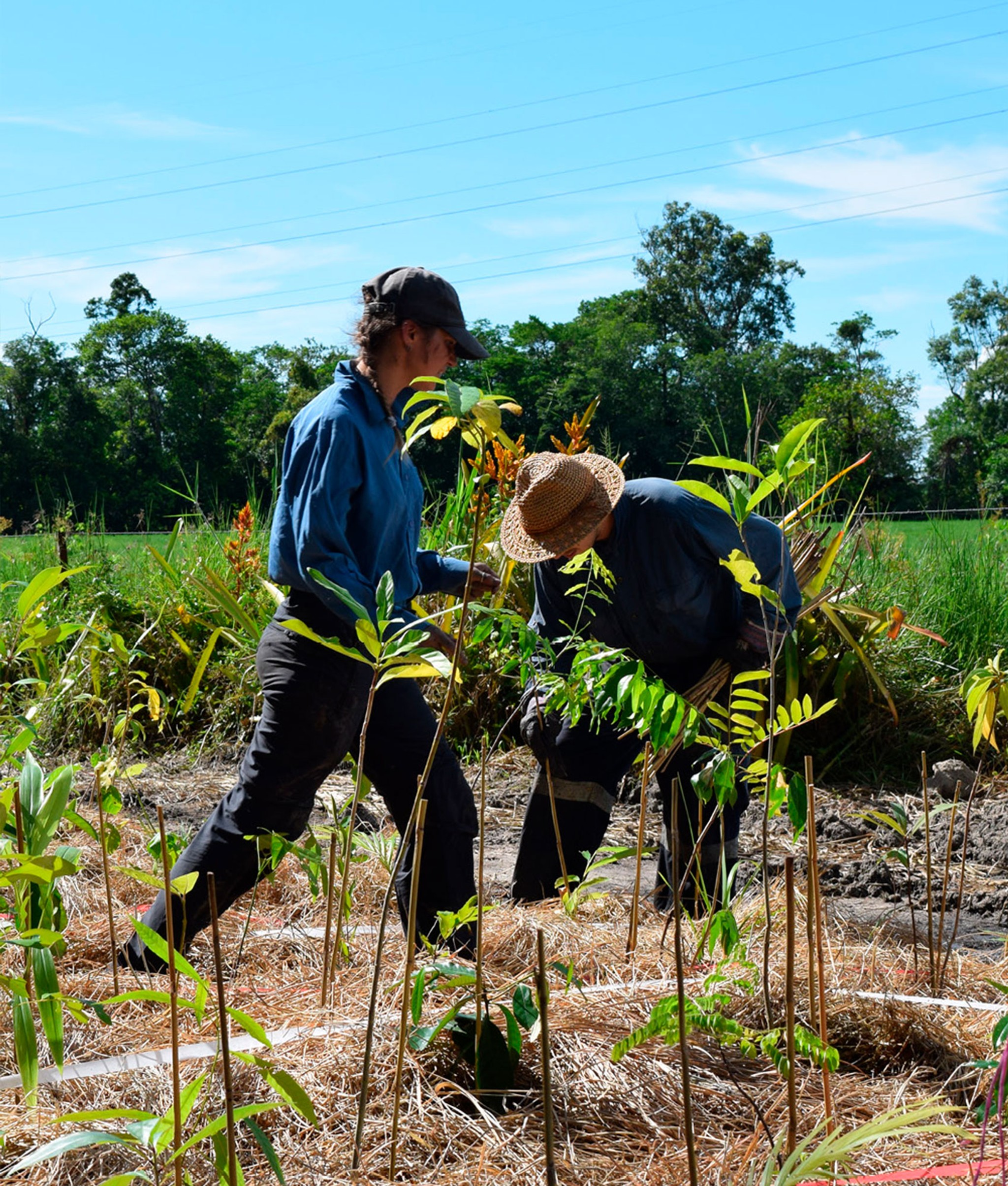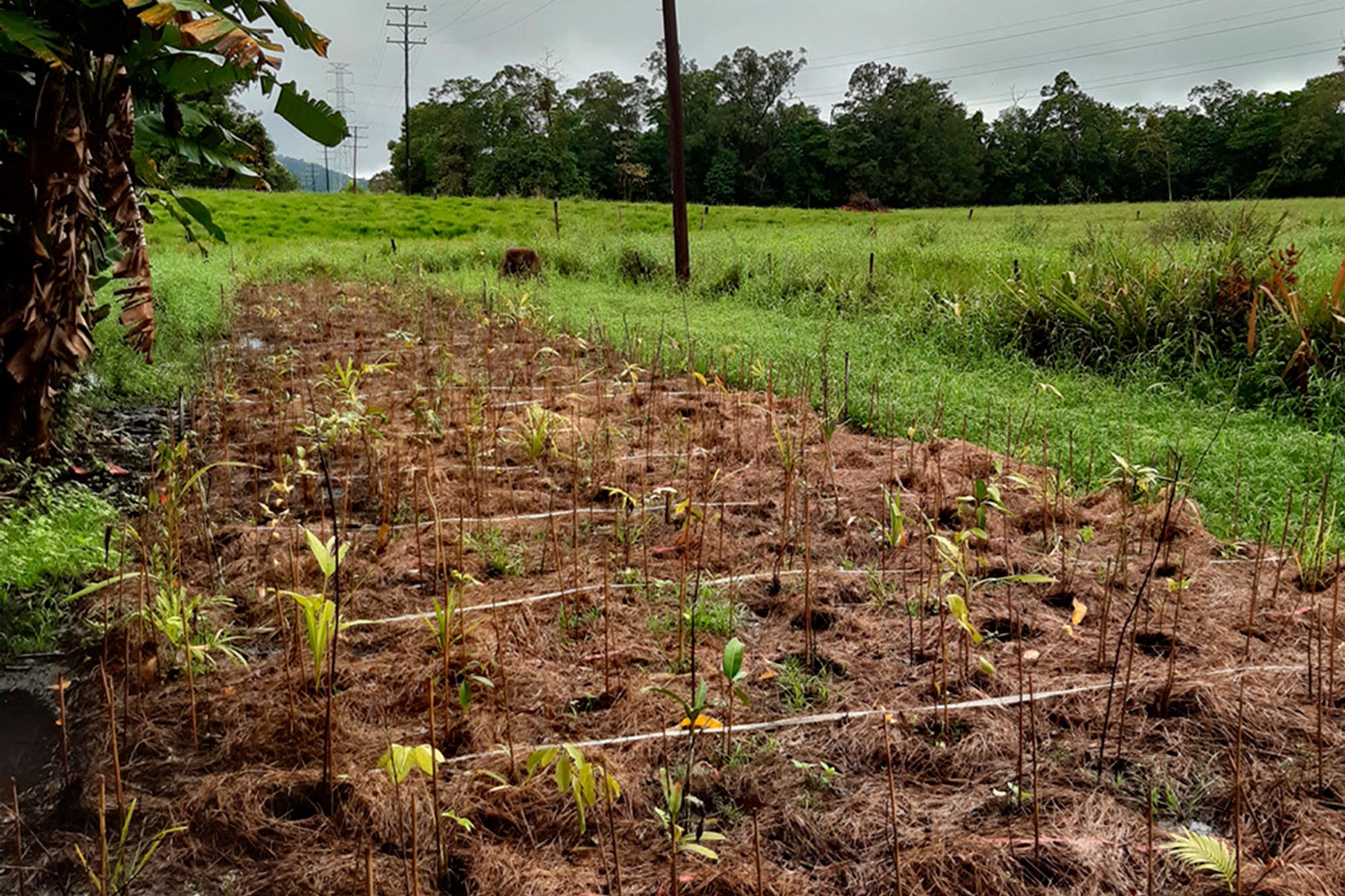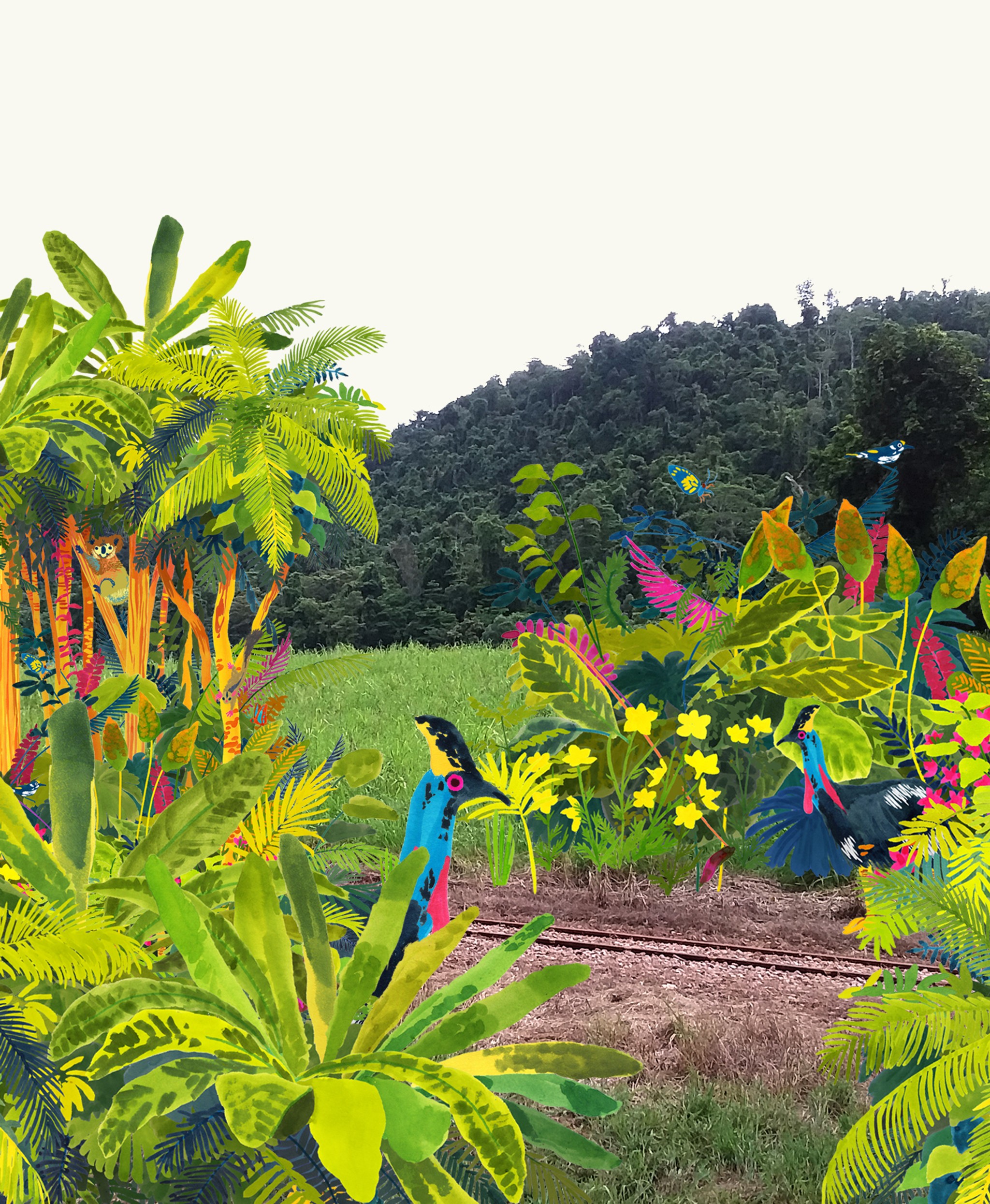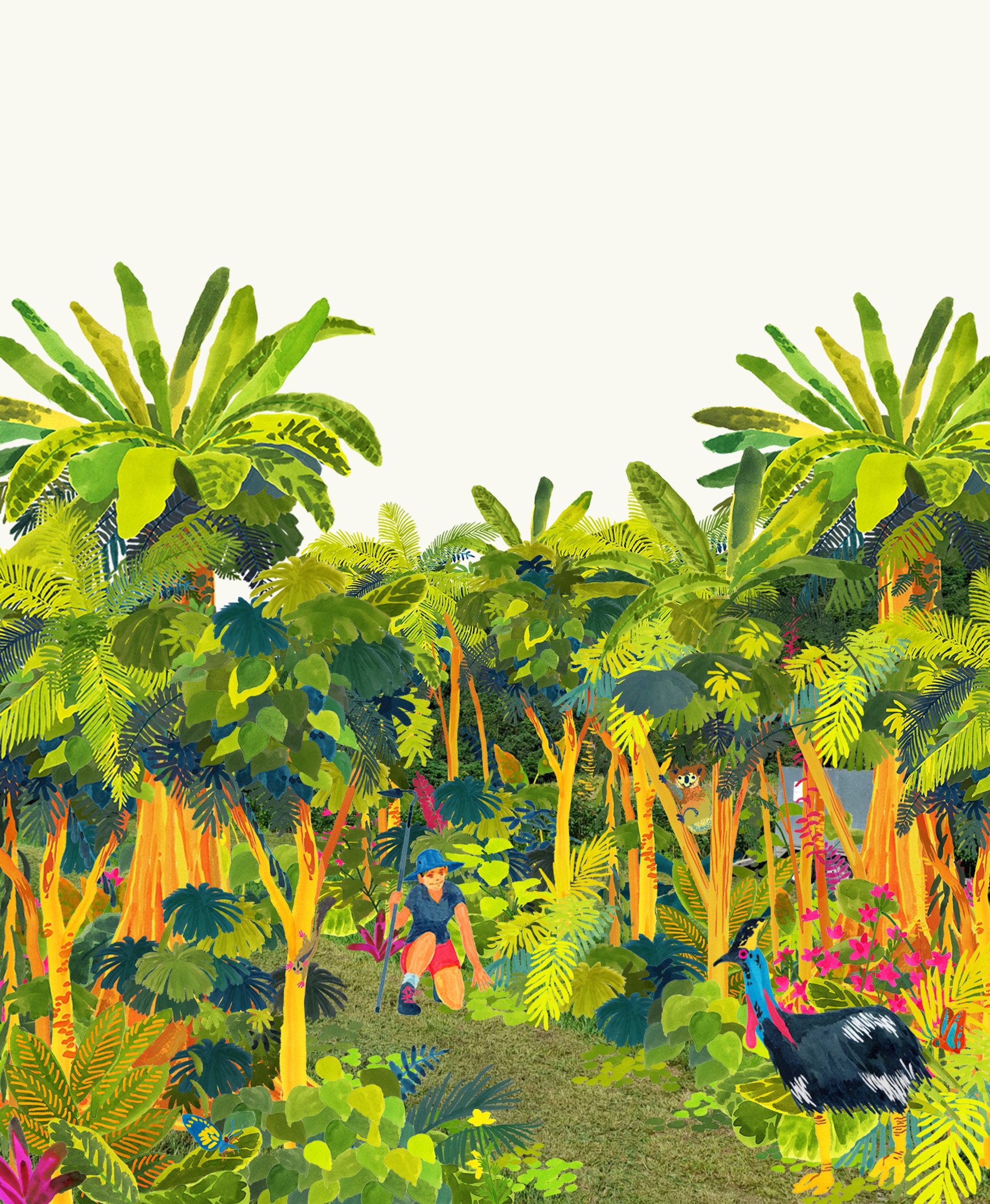Tully
A sanctuary for Nature.

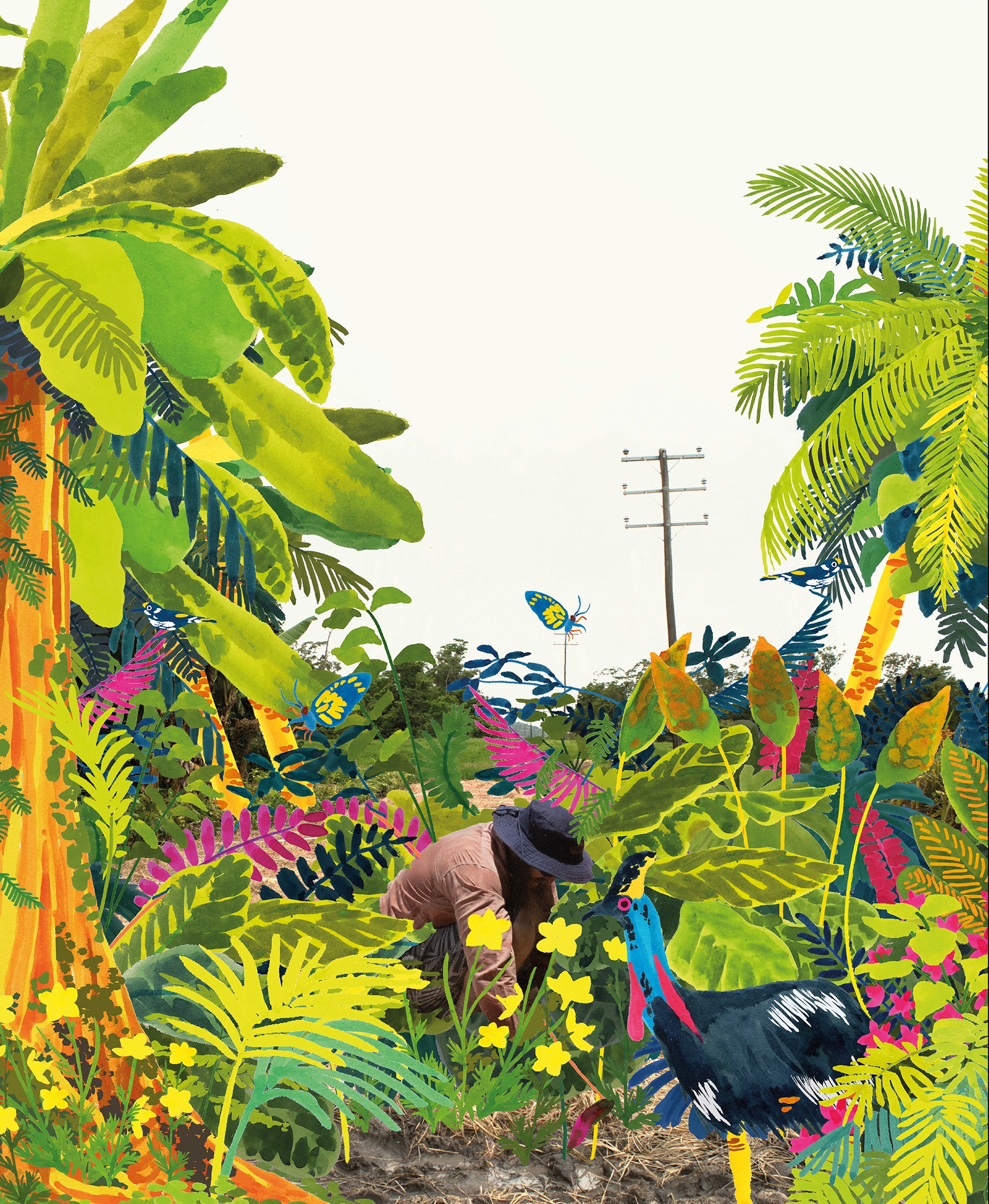
0
Trees
0
Square Meters
0
Native Species
Self Sustaining Forest
We planted Tully Forest in March 2020. Since then, it has transformed into a biologically rich ecosystem, supporting various bird species, small spiders, and insects. The forest’s tall trees have created a dense canopy, forming a developed strata - layers of vegetation - that supports diverse life.
As a critical wildlife hub, the forest connects fragmented habitats and revitalizes the surrounding degraded land. Notable species of flora include the pink evodia (Melicope elleryana), a native rainforest shrub, and the red-leaf fig (Ficus congesta), with its striking coppery brown leaves. Birds feed on the small, black grape-like clusters of berries from the bandicoot berry shrub (Leea indica), while invertebrates such as ladybirds and spiders live among the leaves.
Forest Maker
Brett Krause
Forest Partner

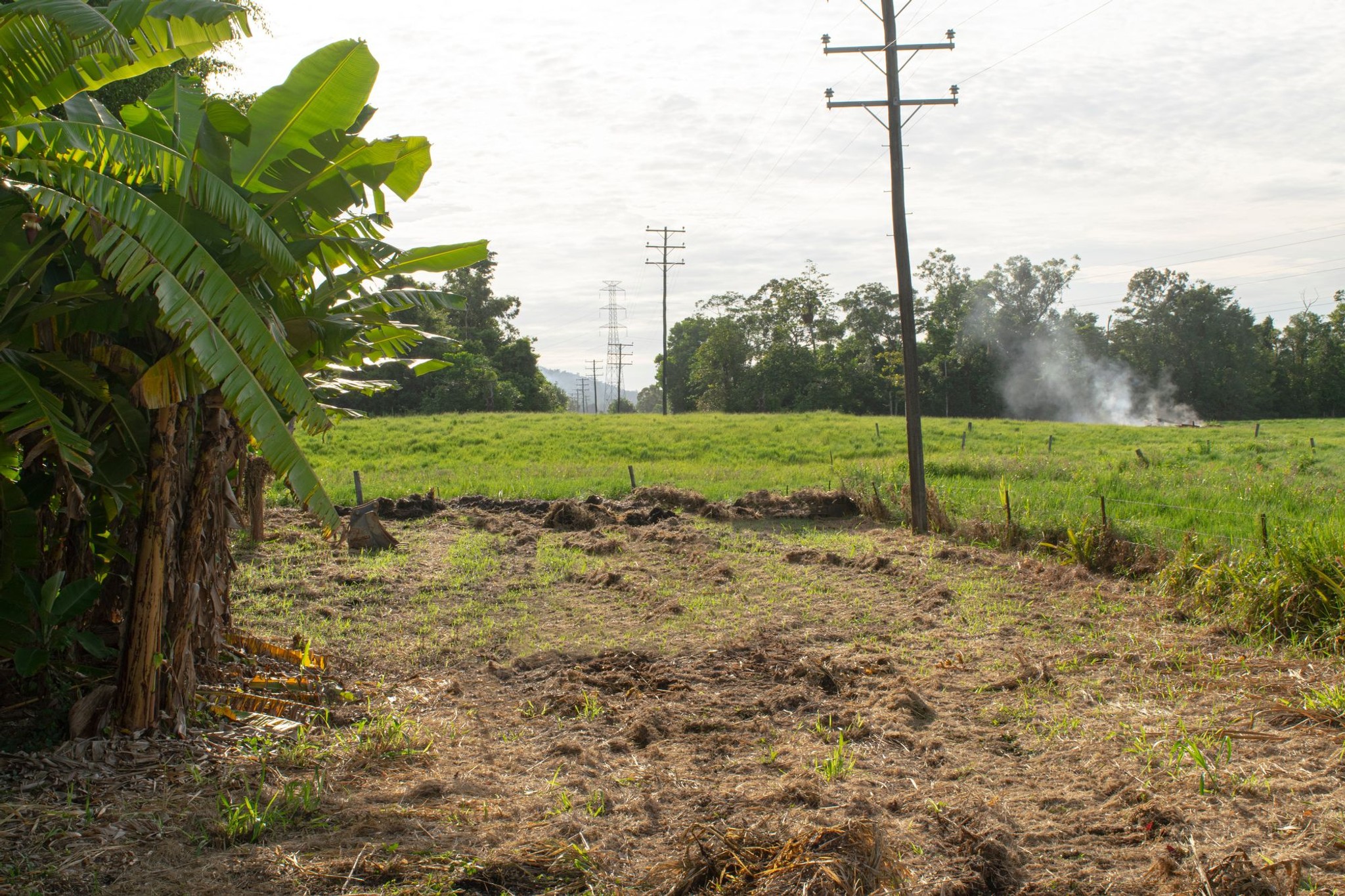

Ecosystem Restored
Final report: 17.12.2024
After approximately three years our SUGi Pocket Forests become self-sustaining. They no longer require human maintenance or watering, and can be handed over to Nature for biodiversity and complexity to naturally develop.
0%
Survival Rate
0
kg of potential CO2 sequestration
Biodiversity
Biodiversity is all the different kinds of life you'll find in one area—the variety of animals, plants, fungi, and even microorganisms like bacteria that make up our natural world. Each of these species and organisms work together in ecosystems, like an intricate web, to maintain balance and support life.
0
Potential number of mammals
0
Potential number of birds
0
Potential number of amphibians
Forest Report: 2022
0 Years
Forest Age
0%
Survival Rate
0m
Average of Tallest 3 Trees
Tully has faced more challenges than other Queensland projects - indicated in a lower survival rate this year - due to several flooding events and the infiltration of cattle from neighboring land. However, this pocket forest grows well and is another excellent example of the resilience of the Miyawaki method. Indeed, the forest is helping to reduce the moisture stagnation issues that were a challenge for the forest in its early days.
The forest floor and canopy are still developingbut across 30% of the site Tully is self-sustaining. Growth has been slower due to events mentioned above, but succession from surrounding vegetation is occurring well, with native seeds and understorey flora that was difficult to obtain at planting now becoming established in the forest.
At least five non-planted species that could not be found in local nurseries are now present in the forest. Bird droppings are also contributing to the appearance of ever more new native species.
Biodiversity Notes:
Insect and bird life is increasing. Wasp nests are noted and well established. The biodiversity continues to increase with many more species of insects, dragonflies, small reptiles and over 15 bird species recorded, including the Willy Wagtail (Rhipidura leucophrys), Pheasant Coucal (Centropus phasianinus), the Blue-winged Kookaburra (Dacelo leachii) and Black Butcher Bird (Cracticus quoyi). The Ulysses Butterfly (Papilio ulysses) and Northern Brown Bandicoot (Isoodon macrourus) have also been observed.
“My favorite tree is the quandong tree, Elaeocarpus Grandis, which is a keystone species for this region that supports so many native animals, birds, and particularly the southern cassowary which is endangered.”
Brett Krause, SUGi Forest Maker
Forest Report: 2021
0 Months
Forest Age
0%
Survival Rate
0m
Tallest Tree
The site is now established after a slow start with water logging but succession from surrounding vegetation, native seeds and understorey flora that was difficult to obtain established. So a great result in the long run.
Leaf litter is establishing under the canopy. Understorey groundcover is established. Significant weeding was conducted and resulted in new growth of Miyawaki trees and new seeds propagating. Invasive grasses have been maintained.
It has been a very wet period! Tully has recorded over 4.7m of rain for the year so far. This is well over 1m more than the long term average. The Miyawaki is proving resilient overall as an ecosystem. Neighbour’s cows have accessed the site again but no damage, hoof prints visible around the edge.
Biodiversity Notes:
“This Miyawaki forest will complement the degraded ecosystem as well as the rainforest area and it will help pollinate fruit trees.”
Brett Krause, SUGi Forest Maker


